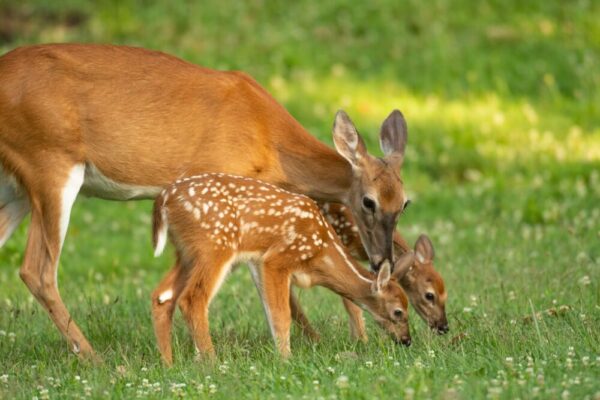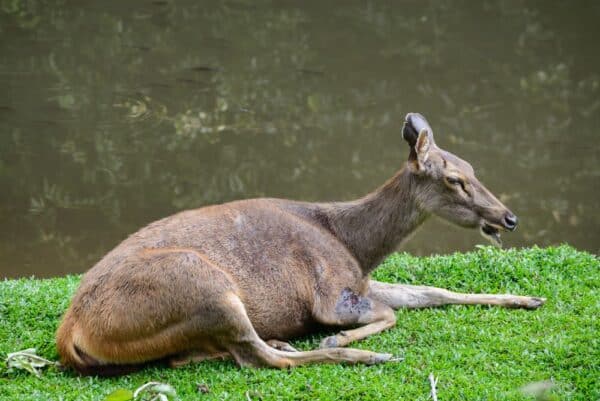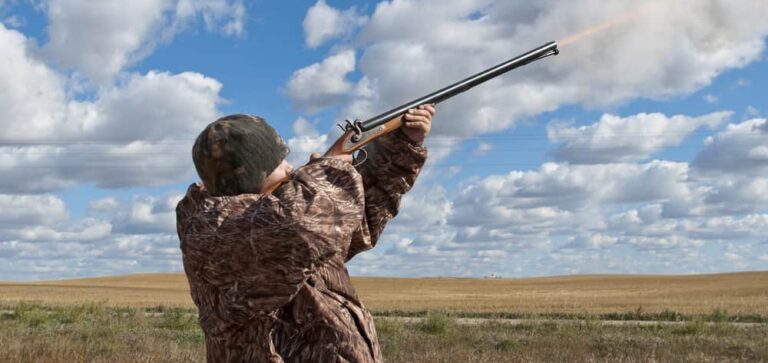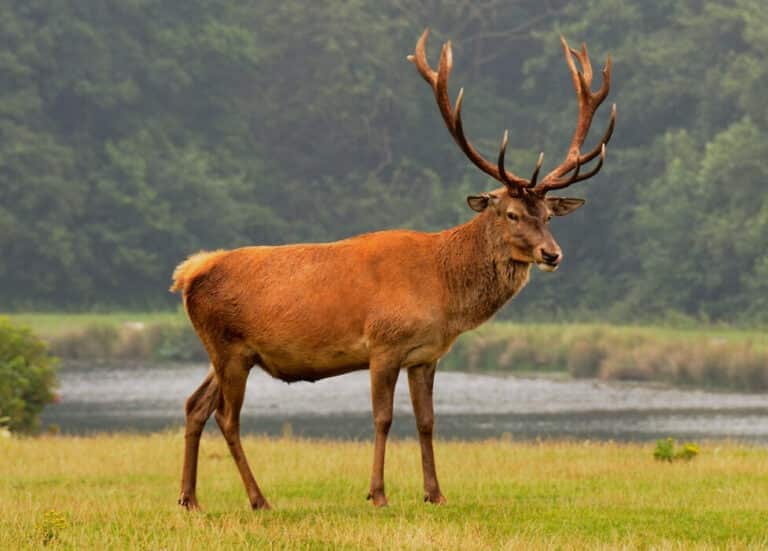Deer antlers are a biological marvel that has fascinated hunters and wildlife enthusiasts alike. This blog post delves into the intricacies of their growth, mineralization process, and environmental influences on development.

We’ll explore the evolutionary journey from tusks to antlers, shedding light on early deer species and the benefits behind this transformation. Additionally, we’ll examine a case study of White-tailed Deer, focusing on distribution patterns and hunting popularity among hunters.
The costly process of antler production will be discussed in detail, along with Darwin’s perspective on sexual dimorphism about extravagant deer antlers. We also address the controversy surrounding velvet derived from young developing deer antlers.
To conclude our exploration, we assess health by understanding factors influencing deer antler growth and maintenance. Prepare yourself for an enlightening journey into the world of hardened antlers!
The Marvel of Deer Antlers
Deer antlers are fascinating. They grow faster than any other bone in a deer’s body and serve multiple purposes. They’re like the Swiss Army knives of the animal kingdom. Antlers can grow as fast as 1/2 inch per day. That’s like a growth spurt on steroids.
Nutritional requirements for maximum growth
- Protein: Protein is the building block for antler growth. It’s like the construction crew building impressive racks and supporting hardened antlers.
- Vitamins & Minerals: Vitamins and minerals are the secret sauce for antler development. They keep those antlers solid and healthy.
- Fats: Fats provide the energy needed for rapid antler growth. They’re like the fuel that powers this incredible process.
To support this fantastic feat, bucks need a nutritious diet. The better the food, the bigger the rack. Check out QDMA’s guide on deer nutrition for more info.
This biological marvel not only showcases the survival tactics of these creatures but also reminds us of the intricate processes at work in our ecosystems. It’s like a nature documentary unfolding right in front of our eyes.
Evolutionary Journey from Tusks to Deer Antlers
The evolution of deer antlers is a wild ride that goes way back. At first, they were like tusks, just like what elephants and walruses have. But then, they got fancy and turned into the majestic structures we see today.
What did early deer antlers look like?
Initially, deer had simple tusks sticking out of their upper jaws. These tusks were handy for digging up roots and breaking loose tree bark. Plus, they helped with the whole male-male competition thing during mating season.
Evolutionary benefits behind the transformation
- Better combat gear: As males fought for mates, having bigger and fancier antlers became a real advantage. Unless the antlers mineralized, the tusks slowly turned into branching structures that could deliver severe blows.
- Direct advertising: Deer with more giant antlers tend to be healthier and have better genes. So, the ladies find them quite attractive. It’s all about sexual selection, baby.
- Survival multitool: Antlers aren’t just for show. Deer use them to clear snow-covered food during winter and to fend off predators. Talk about versatile.
The journey from tusks to intricate antlers shows how nature can adapt and give deer some severe edge in fighting and flirting.
Environmental Influence on Deer Antlers Development
Many factors, including short-term and long-term environmental changes, influence deer antlers’ growth and development. For instance, the availability of food resources can significantly impact antler size. Deer with access to abundant high-quality forage tend to develop more giant antlers than those living in less fertile areas.
Impact of Environmental Conditions on Body vs. Antler Growth
A study by Montana State University found that deer prioritize body growth over antler growth when food is scarce. If sustenance is inadequate due to extreme weather or insufficient food, a deer will prioritize developing its body rather than growing antlers.
Age-related Patterns in Reproductive Success Due to This Adaptation
This adaptation strategy has evolutionary benefits, too. Older bucks with smaller bodies but more giant antlers survive longer and attract more mates than younger ones with bigger bodies but smaller racks. It’s nature’s way of balancing survival and reproduction.
Drier conditions during the early years can also impact size. A study suggests that prolonged drought-like situations could lead to reduced body sizes and, consequently, smaller racks among deer exposed to such adverse circumstances.
Understanding how environmental factors influence deer’s physical attributes, like their majestic headgear, provides valuable insights into their health and resilience while navigating changing climates. Ongoing research efforts are needed in this area.
White-tailed Deer – A Case Study
The white-tailed deer is like the popular kid at school, loved by hunters and admired for its antler growth. But guess what? Climate conditions don’t have a direct impact on their antler mass. Take that, Mother Nature. Occasionally, you will see a few abnormal antlers, which may ruin its photogenic disposition.
Distribution Pattern & Hunting Popularity
These deer are the ultimate survivors, thriving in forests, grasslands, and everywhere. No wonder hunters can’t resist the challenge of bagging one of these adaptable beauties.
No Weather, No Problem
A study in the Journal of Mammalogy revealed that weather patterns don’t determine the size of harvested bucks’ antlers. It’s all about genetics and local nutrition, baby. Who knew? This finding upends our conception of deer antler growth, demonstrating that there is still much to be discovered about these remarkable animals. It’s not just about biology but also about managing healthy herds and preserving diverse ecosystems.
Costly Process of Deer Antlers Production
The process of antler production in deer, especially the white-tail variety, is fascinating but resource-intensive. It’s not just about growing an appendage; it involves turning it into bone harder than a rock. This typically happens before the breeding season.
The Hardening of an Appendage: A Calcium-Packed Adventure
This transformation requires loads of calcium and phosphorus. Fun fact: these minerals are stolen from other parts of the deer’s body to support this growth spurt. According to Michigan State University, up to 50% of a buck’s skeletal calcium is transferred to its developing antlers during peak antler growth.
To make this transfer happen smoothly, the deer needs to meet specific nutritional requirements:
- Protein: Protein is crucial for cell replication and tissue synthesis during antler development. It’s like the building blocks of antler awesomeness.
- Vitamins & Minerals: Vitamins A, D, and E, along with minerals like zinc, keep the deer’s cells happy and healthy, indirectly influencing antler growth. It’s like giving the deer a daily dose of superhero serum.
- Fats: Fats serve as energy reserves, especially during the winter when food is scarce. Bucks need that extra energy to survive and grow their new antlers after shedding the old ones. It’s like having a backup battery for antler power.
But wait, there’s more. The cost of antler production goes beyond nutrition. There’s also the danger factor. The massive size and weight of those hardened bones on a deer’s head increase the risk of injury during combat for mating rights. It’s like wearing a target on your head for predators. And with abnormal antlers, a left antler may be the deer’s only defense. This is more prevalent in older bucks.
Despite the risks, nature has decided these extravagant antlers are worth it. They help male deer dominate and secure mating rights, leading to increased reproductive success. It’s like having a flashy accessory that attracts all the ladies, which is needed because the breeding season comes once per year.
Overly Extravagant Sexual Dimorphisms
Biologists have long been intrigued by sexual dimorphism, where males and females of the same species display physical distinctions beyond their reproductive organs. Take deer antlers, for example – these headgears defy logic with their size and complexity.
Darwin’s Take on Sexual Dimorphism
Charles Darwin, one of history’s most influential naturalists, was puzzled by this phenomenon. Why would male deer evolve luxurious features that bring more risks than benefits? After all, lugging around massive antlers requires a lot of energy and makes them easy targets for predators.
In his groundbreaking work On The Origin Of Species, Darwin proposed “sexual selection” to explain these puzzling traits. According to him, while these features may be costly for survival, they offer significant advantages in reproduction. Females often prefer males with more extensive or impressive antlers, perceiving them as genetically superior or more fit.
This trade-off between survival costs and reproductive success drives the evolution and maintenance of these over-the-top traits like deer antlers. In other words, despite their apparent drawbacks for survival, these grandiose appendages persist because they enhance males’ chances of fathering offspring – nature’s ultimate goal.
It’s fascinating how something as seemingly straightforward as a deer’s rack can offer profound insights into complex evolutionary processes. This understanding further emphasizes our responsibility to preserve diverse ecosystems across the Americas and beyond so future generations can marvel at nature’s intricate designs and adaptations, just as we do today.
The Debate Over Using Velvet Derived From Young Developing Deer Antlers
Proponents say deer antler velvet supplements have many benefits, like improved athletic performance and injury recovery. They claim it’s packed with growth factors that can boost cell growth and repair.
But skeptics aren’t convinced. They question the effectiveness and ethics of using deer antler velvet. Some question whether the purported health benefits of deer antler velvet have sufficient scientific backing. Others worry about the stress and harm caused to the animals during harvesting.
- Efficacy: Some studies have found no improvement in muscle strength or endurance after taking deer antler velvet supplements. For example, one study published by PubMed Central (PMC) showed no increase in bench press strength or sprint exercise performance after ten weeks of New Zealand deer antler extract supplementation.
- Ethics: Harvesting velvet involves removing it from live deer under anesthesia, which can be stressful for the animals, according to reports by organizations like Humane Society International.
This ongoing debate highlights the need for more research to assess the potential health benefits and evaluate the animal welfare implications associated with the harvesting practices used for obtaining such products.
Assessing Deer Antlers Health Through Growth Factors
The growth and maintenance of deer antlers are influenced by various factors, giving us insights into herd health and ecosystem well-being.
Nutrition Matters
A study in ScienceDirect revealed that poor nutrition could stunt antler development, indicating unhealthy herds or suboptimal habitats. Often, only the left antler will be affected. Who knew?
FAQs
When do deer shed their antlers? Or When do deer lose their antlers?
Deer typically shed their antlers annually in a process called “antler casting” or “antler shedding.” The timing of antler shedding can vary based on the deer species, geographic location, and individual factors.
Why do deer shed their antlers?
Deer shed their antlers primarily due to hormonal changes and physiological processes related to reproduction and seasonal changes. It’s important to note that only male deer, known as bucks, grow antlers and shed them. Female deer, known as does, do not have antlers.
Where do deer live?
Deer live in timbered areas, especially at the borders of clearings, where they obtain the variety of foods they like; this includes woodlands adjacent to crops.
What do deer do all day?
Deer are browsing animals, eating the leaves, twigs, and fruits of trees and shrubs and the foliage of herbaceous plants.
When is the mating season, the rut?
The peak of the mating (rutting) season is in November. Most young are born in late May or early June.
How much do deer weigh?
A doe usually has twins; each weighs 4–7 pounds at birth. The young accompany the female until they are old enough to breed. About half of the young females in Missouri breed in the year of their birth. Other females and young males breed first at 1½ years of age.
How long do deer live?
Deer are in the prime of life between 2½ and 7½ years of age. Deer can live for 15 years in the wild and 25 years in captivity.

Conclusion – Deer Antlers
This blog post has explored the fascinating world of deer antlers and provided valuable insights for hunters. Understanding the rapid growth rate and nutritional requirements for maximum antler development is critical because nobody wants a hangry deer with tiny antlers.
From tusks to antlers, it’s like deer went from being wannabe elephants to having their unique headgear fashion. Environmental influences on antler development? Age-related patterns in reproductive success? It’s like the deer version of “The Real Housewives” drama.
Antler production is no joke – it’s like the deer equivalent of a full-blown construction project, complete with cranes and hard hats. And let’s not forget the controversy surrounding velvet derived from young developing antlers – it’s like the deer version of a skincare routine gone wrong.
By understanding the factors influencing antler growth, hunters can become the ultimate deer whisperers and impress all their friends. So, next time you see a deer with impressive antlers, give them a nod of respect for their remarkable adaptations and impeccable fashion sense.






